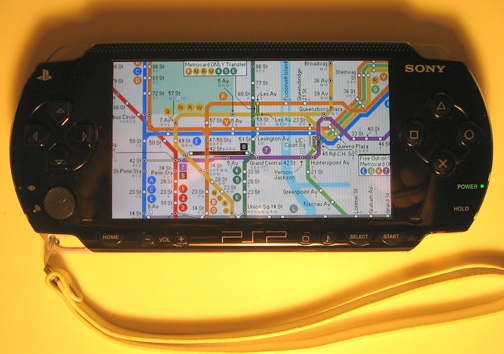After I have my 8 inch by 9 inch PDF file, I need to convert it into a series of JPEGs numbered in sequence and all contained within a folder that I can place inside /PSP/PHOTO/ on my PSP's Memory Stick. For the most part, any imaging program capable of working with PDFs can be used to convert PDFs to JPEG, so make sure you look at the following programs before you go searching around the web for a PC version of programs like PDF 2 PSP.
Adobe Acrobat.
Most likely, you already have a copy of Adobe Reader or Adobe Acrobat Reader on your computer. They are actually both the same program, only Adobe has recently renamed Acrobat Reader as Adobe Reader. If you don't have either on your computer, you can grab a copy for free directly from Adobe (http://www.adobe.com). This program will allow you to view the PDF you have created, but unfortunately it does not support exporting the page images into different formats.
If you own the full version of Adobe Acrobat, you can export the PDF file as a series of JPEGs, and Acrobat will even do the work of naming each separate page as another image in sequence (Image001.jpg, Image002.jpg, etc.).
Preview.app
If you are on Mac OS X, you can use Preview (included with the operating system and located in the Applications folder). If you open the PDF for your e-book in Preview, you can use File Save As to manually save each page as a separate JPEG file. For a large document, this can be laborious to say the least, so it is not the ideal solution.
Image-editing programs
Using an image-editing program such as Adobe Photoshop or Photoshop Elements, you can open a selected page of the PDF and resave it as a JPEG with high quality compression. On Mac OS X, Graphic Converter (available from http://www.lemkesoft.com/en/graphcon.htm for $30 USD) can do the same. You might already have some sort of image-editing program that came with a digital camera or scanner and is capable of opening PDFs and converting them to JPEGs. The GNU Image Manipulation Program, GIMP (http://www.gimp.org/), is available for Windows, Linux, Unix, and Mac OS X, and can handle a wide variety of formats, including PDF and JPEG.
PDF 2 PSP
If you are using a Mac, then you can grab a helpful, free little program called PDF 2 PSP (http://pdf2psp.sourceforge.net/).
In PDF 2 PSP, you choose the location of the PDF and then a folder where you want the collection of sequenced JPEGs to be stored. If your PSP is connected and mounted on your computer, you can even have the program output directly to /PSP/PHOTO/ on your Memory Stick. You have the option to either adjust the picture to be displayed in portrait or landscape view on the PSP, you can set the quality of the image, and you can set the size of the pages to a variety of options: Original Size, Fit to Screen, Fit to Width, 2x Screen Width, and High Resolution. I recommend choosing Original Size, 2x Screen Width, or High Resolution to ensure legibility of your document on the PSP, and setting the layout to portrait to allow you the ability to both zoom in on the image and pan and scan around the page.
iPSP
iPSP (http://ipsp.kaisakura.com/; $19.99 USD) features the ability to convert PDFs to JPEGs formatted to fit on your PSP, but there aren't as many configuration options available as there are with PDF 2 PSP. This isn't necessarily a bad thing, however, as iPSP does a good job of converting PDFs to JPEGs. There are both Mac and PC versions of the program, but at this time, it looks like only the Mac version supports PDF to JPEG conversion. As an example for this hack, I took a PDF copy of the PSP's manual from the PlayStation site (http://www.playstation.com/manual/pdf/PSP-1001K_1.pdf) and converted it into a folder of sequenced JPEGs for reading on the PSP.
With iPSP, there is no need to locate the folder of converted images and then move them to /PSP/PHOTO/ on your Memory Stick, since the program automatically places the files in the proper location as it converts.






